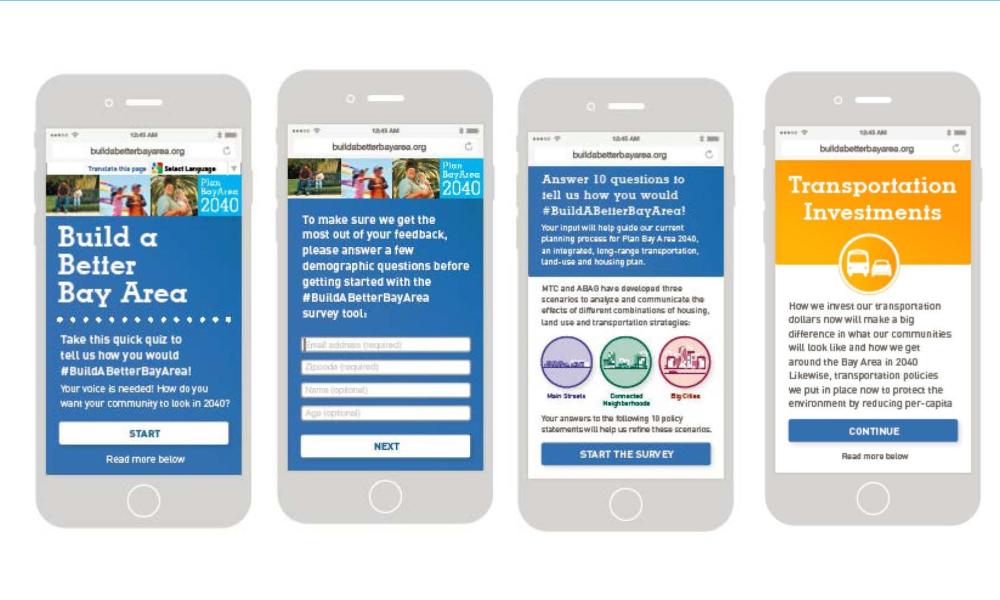Residents Get New Online Tools to Help Shape Bay Area’s Future

The Metropolitan Transportation Commission (MTC) this week unveiled two new online tools to make it easier for Bay Area residents to weigh in on the policies and strategies shaping Plan Bay Area 2040, the long-range regional transportation and housing roadmap.
The Build a Better Bay Area website is an interactive quiz that introduces residents to the three alternative scenarios—Main Streets, Connected Neighborhoods, and Big Cities—being considered by MTC and the Association of Bay Area Governments (ABAG) for future housing and employment, as well the transportation network needed to support this growth. This online quiz, easily accessed from a smart phone, tablet or desktop computer, is made up of 10 simple questions covering transportation and land-use policy issues. Visitors to the site can select an answer on a scale that ranges from strongly agree to strongly disagree. The tool’s goal is to help residents see which scenario (or scenarios) align most closely with their own personal priorities as well as how their responses may impact how MTC plans for the future. After completing the quiz, visitors can compare their results with those of others across the nine-county region. Visitors are encouraged to share their outcomes with family, friends and neighbors via social media. Spanish and Chinese language versions of the quiz are available upon request.
Also launched this week is the Plan Bay Area Open Forum, where residents can view information about the three scenarios and provide input by answering four quick questions. Comments and responses are published and publicly viewable on the forum, with the hope of sparking a conversation online.
The responses and comments that MTC and ABAG receive via both the Build a Better Bay Area quiz and the Plan Bay Area Open Forum will be included in the summary of public comments that staff will present to the MTC Planning Committee and ABAG Administrative Committee in July. Public input ultimately will be used to help develop a “preferred scenario” from the three alternative scenarios. This preferred scenario with a combination of strategies, policies and investments that best achieve the Plan’s goals is expected to be adopted at a joint meeting of the two committees in September.


